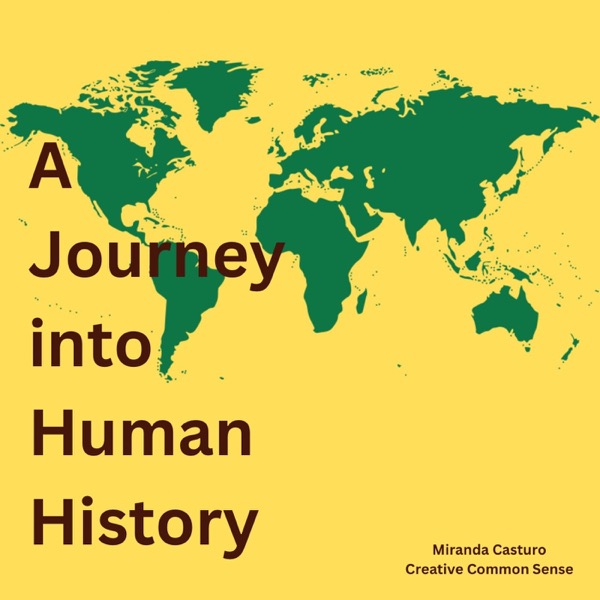The Age of Empires in the Americas
A Journey into Human History - A podcast by Miranda Casturo

Categories:
In Mesoamerica in the fifteenth century, the Aztec Empire expanded to control central Mexico from its island city of Tenochtitlán. In addition to building large temples, ball courts, and palaces, the Aztec practiced human sacrifice as an important religious ritual. In the Andean region, the Inca Empire expanded to control a large swath of western South America from its capital at Cuzco, eleven thousand feet above sea level. The empire was created by trained warriors, employed a tribute system, and was held together by a vast network of roads through its largely mountainous terrain. Intensive agriculture of maize in the Southwest and Eastern Woodlands led to enormous changes in both regions. By around 900, a number of settlements had grown in the Southwest, such as Pueblo Bonito in Chaco Canyon, the cliffside dwellings at Cliff Palace in Mesa Verde, and the larger Casas Grandes settlement in northern Mexico. In the Eastern Woodlands, the adoption of maize agriculture around 800 led to the rise of the Mississippian tradition and large agricultural communities across the Mississippi River valley. Most were small chiefdoms, but a few like Cahokia were exceptionally large, with populations in the thousands. All images referenced in this podcast can be found at https://openstax.org/books/world-history-volume-1/pages/8-3-the-age-of-empires-in-the-americas Welcome to A Journey into Human History. This podcast will attempt to tell the whole human story. The content contained in this podcast was produced by OpenStax and is licensed under a Creative Commons Attribution License. Access for free at https://openstax.org/books/world-history-volume-1/pages/1-introduction Podcast produced by Miranda Casturo as a Creative Common Sense production.
